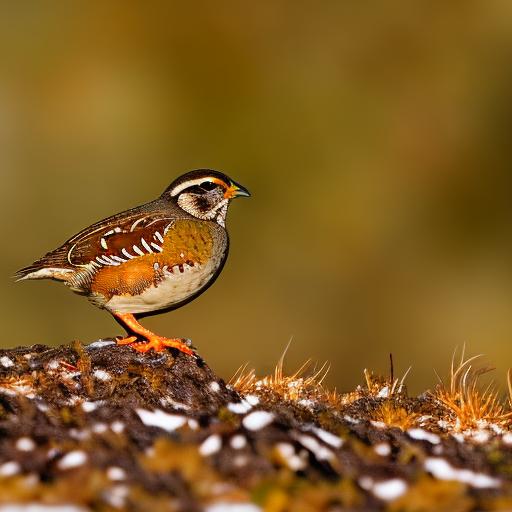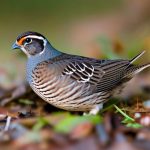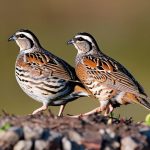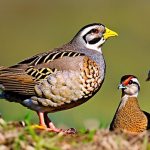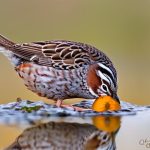Quails are generally hardy birds that can tolerate a wide range of temperatures, but they do have their limits when it comes to cold weather. Understanding a quail’s cold tolerance is crucial for providing the right care and shelter during the winter months. Quails are most comfortable in temperatures ranging from 60 to 75 degrees Fahrenheit, but they can handle temperatures as low as 50 degrees Fahrenheit. However, when the temperature drops below 50 degrees, quails can start to experience stress and discomfort. Prolonged exposure to temperatures below 40 degrees can be dangerous for quails and can lead to health issues such as frostbite and respiratory problems. It’s important to keep in mind that different quail species may have varying levels of cold tolerance, so it’s essential to research the specific needs of the quail species you are raising.
In addition to understanding their cold tolerance, it’s important to recognize the signs of cold stress in quails. Some common signs of cold stress in quails include huddling together for warmth, decreased activity, shivering, and a decrease in egg production. If you notice any of these signs in your quails, it’s crucial to take action to provide them with the necessary warmth and shelter to prevent further stress and health issues. By understanding a quail’s cold tolerance and recognizing the signs of cold stress, you can take proactive measures to ensure the well-being of your quails during the colder months.
Key Takeaways
- Quail can tolerate cold temperatures, but it’s important to understand their limits and provide adequate shelter to protect them from extreme cold.
- Providing a well-insulated coop with proper ventilation is crucial for keeping quail warm during cold weather.
- Heat lamps or heating pads can be used to provide additional warmth, but it’s important to monitor the temperature to prevent overheating.
- Insulating the quail coop with materials like straw or hay can help retain heat and keep the birds comfortable in cold weather.
- Using bedding and nesting materials like pine shavings or straw can provide insulation and warmth for quail during cold weather.
Providing Adequate Shelter
Providing adequate shelter is essential for protecting quails from the cold weather. A well-constructed coop is crucial for keeping quails safe and comfortable during the winter months. The coop should be insulated and draft-free to maintain a stable and comfortable temperature inside. Additionally, the coop should be designed to provide ample space for the quails to move around while also allowing them to huddle together for warmth if needed. It’s important to ensure that the coop is well-ventilated to prevent moisture buildup, which can lead to respiratory issues in quails. Proper ventilation will also help regulate the temperature inside the coop and prevent it from becoming too humid or stuffy.
In addition to a well-constructed coop, providing outdoor shelter is also important for quails. Outdoor shelters such as covered runs or windbreaks can provide protection from harsh winds and precipitation, helping to keep quails warm and dry. These shelters should be strategically placed to provide maximum protection from the elements while still allowing the quails access to fresh air and sunlight. By providing adequate indoor and outdoor shelter, you can create a safe and comfortable environment for your quails to thrive during the winter months.
Using Heat Lamps or Heating Pads
In some cases, providing additional heat may be necessary to keep quails comfortable during extremely cold weather. Heat lamps or heating pads can be used to supplement the natural warmth provided by the quail’s shelter. When using heat lamps or heating pads, it’s important to place them in a safe location where they cannot come into contact with flammable materials or pose a risk of fire. Additionally, it’s crucial to monitor the temperature inside the coop regularly to ensure that it remains within a safe and comfortable range for the quails.
When using heat lamps or heating pads, it’s essential to provide a gradual transition from warm to cool areas within the coop. This will allow the quails to regulate their body temperature naturally and prevent them from becoming dependent on artificial heat sources. It’s also important to provide enough space for the quails to move away from the heat source if they become too warm. By using heat lamps or heating pads responsibly, you can provide your quails with the extra warmth they need to stay healthy and comfortable during cold weather.
Insulating the Quail Coop
Insulating the quail coop is an effective way to maintain a stable and comfortable temperature inside, even during cold weather. Proper insulation can help prevent heat loss and drafts, creating a cozy environment for the quails to thrive in. There are several insulation options available, including foam board, fiberglass insulation, and reflective insulation. When insulating the coop, it’s important to pay attention to areas such as walls, ceilings, and floors where heat loss is most likely to occur.
In addition to insulation, sealing any gaps or cracks in the coop is essential for preventing drafts and maintaining a consistent temperature inside. Weather-stripping and caulking can be used to seal gaps around doors, windows, and vents, helping to keep cold air out and warm air in. By insulating and sealing the quail coop, you can create a comfortable and energy-efficient environment for your quails to thrive in during the winter months.
Using Bedding and Nesting Materials
Bedding and nesting materials play a crucial role in keeping quails warm and comfortable during cold weather. Good quality bedding such as straw, hay, or wood shavings can provide insulation from the cold ground and help regulate the temperature inside the coop. Additionally, bedding materials can absorb moisture and provide a soft and comfortable surface for the quails to rest on. Nesting materials such as dried grass or shredded paper can also provide additional warmth and comfort for quails during colder months.
It’s important to regularly clean and replace bedding and nesting materials to maintain a clean and healthy environment for the quails. Wet or soiled bedding can lead to mold growth and respiratory issues in quails, so it’s crucial to keep their living area clean and dry. By using high-quality bedding and nesting materials, you can create a cozy and comfortable environment for your quails to nest and rest in during cold weather.
Adjusting the Diet
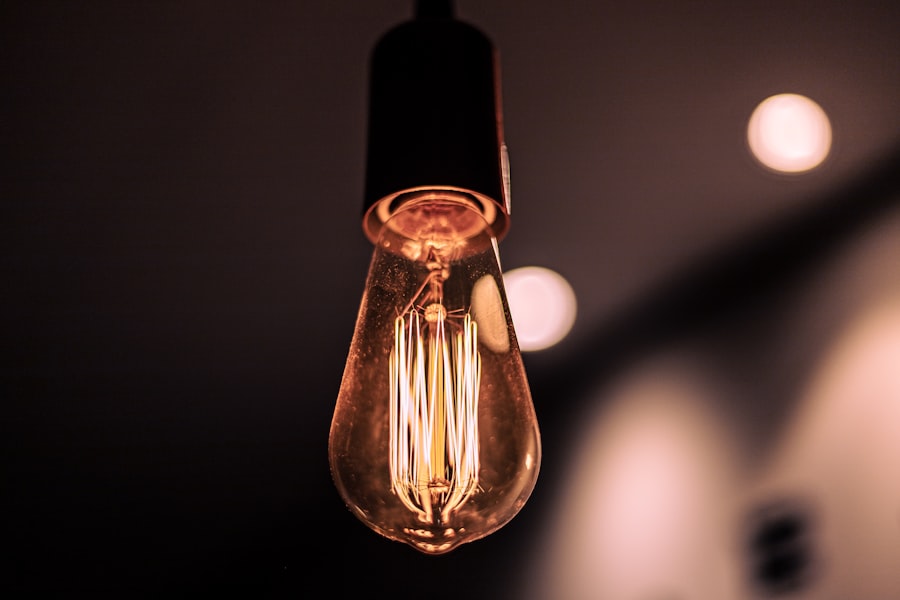
During colder months, it’s important to adjust the diet of quails to provide them with the extra energy they need to stay warm. Quails require more calories during cold weather to maintain their body temperature, so it’s essential to provide them with a balanced diet that meets their increased energy needs. High-quality commercial feed formulated for quails should be supplemented with additional protein-rich foods such as mealworms, crickets, or scrambled eggs to help meet their increased energy requirements.
In addition to adjusting their diet, providing access to fresh water is crucial for quails during cold weather. Water is essential for maintaining their overall health and regulating their body temperature. It’s important to regularly check water sources for freezing and provide warm water if necessary. By adjusting their diet and ensuring access to fresh water, you can help your quails stay healthy and comfortable during colder months.
Monitoring and Maintaining Temperature
Monitoring and maintaining the temperature inside the quail coop is essential for ensuring the well-being of the birds during cold weather. It’s important to regularly check the temperature inside the coop using a thermometer and make adjustments as needed to maintain a stable and comfortable environment for the quails. Additionally, it’s crucial to monitor humidity levels inside the coop and make adjustments as needed to prevent moisture buildup.
Regular maintenance of heating equipment such as heat lamps or heating pads is also important for ensuring their safe and effective operation. It’s essential to regularly inspect these devices for any signs of wear or damage and replace them as needed to prevent potential fire hazards or malfunctions. By monitoring and maintaining the temperature inside the coop, you can provide your quails with a safe and comfortable environment to thrive in during cold weather.
In conclusion, understanding a quail’s cold tolerance and taking proactive measures to provide adequate shelter, warmth, insulation, bedding, diet adjustments, and temperature monitoring are essential for ensuring the well-being of quails during cold weather. By implementing these strategies, you can create a safe and comfortable environment for your quails to thrive in even during the coldest months of the year.
Looking for ways to keep your quail warm during the winter months? Check out this informative article on PoultryWizard about using a heater for a chicken coop. This article provides valuable insights and tips that can be adapted for keeping quail warm and comfortable in colder temperatures. Click here to learn more about creating a cozy and safe environment for your quail during the winter.
FAQs
What are some ways to keep quail warm in the winter?
Some ways to keep quail warm in the winter include providing a well-insulated coop, using heat lamps or heating pads, and ensuring adequate ventilation without drafts.
How can I insulate my quail coop for winter?
You can insulate your quail coop for winter by adding extra bedding, using straw bales around the outside, and sealing any drafts or gaps in the coop walls and windows.
Is it safe to use heat lamps or heating pads for quail in the winter?
Yes, it is safe to use heat lamps or heating pads for quail in the winter, as long as they are used properly and are not a fire hazard. It’s important to monitor the temperature and ensure that the quail have room to move away from the heat source if they get too warm.
How can I ensure proper ventilation in my quail coop during the winter?
You can ensure proper ventilation in your quail coop during the winter by providing vents near the top of the coop to let out moisture and ammonia, while still preventing drafts from reaching the quail.
What temperature range is ideal for quail in the winter?
The ideal temperature range for quail in the winter is between 50-70 degrees Fahrenheit. It’s important to monitor the temperature and make adjustments as needed to keep the quail comfortable.
Meet Walter, the feathered-friend fanatic of Florida! Nestled in the sunshine state, Walter struts through life with his feathered companions, clucking his way to happiness. With a coop that’s fancier than a five-star hotel, he’s the Don Juan of the chicken world. When he’s not teaching his hens to do the cha-cha, you’ll find him in a heated debate with his prized rooster, Sir Clucks-a-Lot. Walter’s poultry passion is no yolk; he’s the sunny-side-up guy you never knew you needed in your flock of friends!

